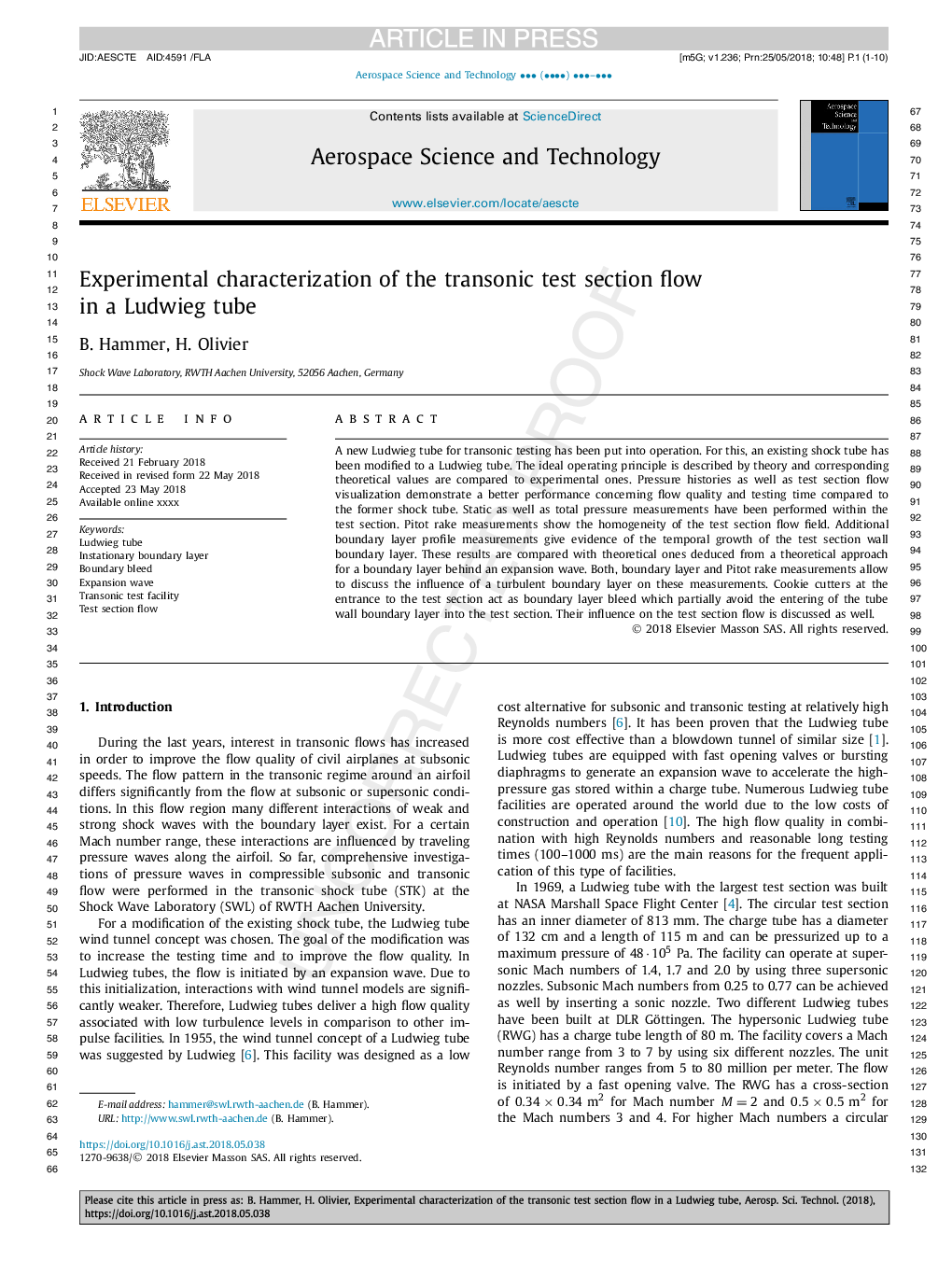| Article ID | Journal | Published Year | Pages | File Type |
|---|---|---|---|---|
| 11007257 | Aerospace Science and Technology | 2018 | 10 Pages |
Abstract
A new Ludwieg tube for transonic testing has been put into operation. For this, an existing shock tube has been modified to a Ludwieg tube. The ideal operating principle is described by theory and corresponding theoretical values are compared to experimental ones. Pressure histories as well as test section flow visualization demonstrate a better performance concerning flow quality and testing time compared to the former shock tube. Static as well as total pressure measurements have been performed within the test section. Pitot rake measurements show the homogeneity of the test section flow field. Additional boundary layer profile measurements give evidence of the temporal growth of the test section wall boundary layer. These results are compared with theoretical ones deduced from a theoretical approach for a boundary layer behind an expansion wave. Both, boundary layer and Pitot rake measurements allow to discuss the influence of a turbulent boundary layer on these measurements. Cookie cutters at the entrance to the test section act as boundary layer bleed which partially avoid the entering of the tube wall boundary layer into the test section. Their influence on the test section flow is discussed as well.
Related Topics
Physical Sciences and Engineering
Engineering
Aerospace Engineering
Authors
B. Hammer, H. Olivier,
